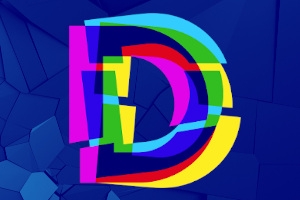Tackling Complexity? Why Diversity Matters
 Engineers have a lot to be proud of. Responsible for imposing structures ranging from the Egyptian Pyramids to the world’s tallest building (currently Dubai’s Burj Khalifa), from the pacemaker to the iPad, their achievements are immense. They’ve also greatly influenced thought around humans and how we interact, views being challenged by the increasing complexity and accelerating rate of change in today’s knowledge economy.
Engineers have a lot to be proud of. Responsible for imposing structures ranging from the Egyptian Pyramids to the world’s tallest building (currently Dubai’s Burj Khalifa), from the pacemaker to the iPad, their achievements are immense. They’ve also greatly influenced thought around humans and how we interact, views being challenged by the increasing complexity and accelerating rate of change in today’s knowledge economy.
The term ‘engineer’ apparently dates back to 1325 when it was used to refer to someone who operated a military machine. Philosophers such as Descartes sought deeper understanding of the human condition through a mechanistic view of the world. Centuries later a mechanical engineer, Frederick Taylor, applied the thinking of his discipline to workers and how organisations function. Regarded as the first management consultant, Taylor used scientific principles in his quest to distill the most efficient means of production. “It is only through enforced standardisation of methods, enforced adoption of the best implements and working conditions, and enforced co-operation that this faster work can be assured,†he wrote in Principles of Scientific Management. “And the duty of enforcing the adoption of standards and enforcing this co-operation rests with management alone.â€
That view of workers as cogs in a great machine driven by management has persisted for a century, despite mounting evidence of its flaws. One who argued for a new view of organisations as dynamic, adaptive systems was the late British theorist and professor, Stafford Beer. For Beer, the traditional notion of an institution was like a fault-finding chart that showed how an automobile was organised. “Some people, and the channels connecting them, are shown in red (as if they are the fuel system), others are shown in blue (as if they were the electrical system), and so on,†he wrote in Designing Freedom. “But nowhere on the … chart can you find such a thing as speed, which is what the automobile is all about. What this orthodox organisation chart leaves out of account, when it comes to understanding institutions, is that we are not dealing with pistons, pumps and distributor arms, but with people; and the connexions between the parts are not crankshafts, pipes, and electrical wires, but human relationships.â€
How people interact within a dynamic environment, the shifting relationships and connections, was at the core of Beer’s pioneering work in cybernetics, a transdisciplinary approach to studying systems. “The organisational forces by which the whole institutional machinery is held together include psychological conflict, loyalty and perfidy, integrity of purpose, hard and lazy work,†Beer wrote. “They also include all manner of special arrangements making cross-linkages.â€
Diversity – of experience, thinking, personalities – is now regarded as a critical element in navigating organisations through complex times. This has implications for deeply held entrenched views on managing people and strategy. “Especially in complex adaptive systems… we don’t really know how things are going to unfold, so it’s difficult to make forecasts or budgets going many years into the future,†says investment strategist Michael Mauboussin, who recommends creating a small number of non-negotiable decision rules. “These are the things that the organisation stands for and that will guide your decisions. Then you pretty much let people decide on the fly in the field what they think makes sense given what they see. They’re never to violate the rules, but they have a lot of flexibility to actually decide from moment to moment.â€
image credit: teachnologyinventionsmkk.com
Don’t miss an article (4,500+) – Subscribe to our RSS feed or Innovation Excellence Weekly newsletter (sample).
 A former journalist and strategic communication specialist, Josie Gibson set up a CFO network, among other things, and now works with companies on creativity and innovation initiatives. Â www.pourquoi.com.au
A former journalist and strategic communication specialist, Josie Gibson set up a CFO network, among other things, and now works with companies on creativity and innovation initiatives. Â www.pourquoi.com.au
NEVER MISS ANOTHER NEWSLETTER!
LATEST BLOGS
How To Stay Connected to Your Co-Workers as a Digital Nomad
The digital nomad lifestyle has grown dramatically in recent years. The number of digital nomads has increased by 42%…
Read MoreCarbon neutrality: what is it, how to achieve it and why you should care
When sustainability is on the agenda, you’re likely to hear many terms mentioned that you may or may not be…
Read More



Great post, Josie. Wake up call for orgs–mechanisms for speed and adaptation are missing in classic design. Most importantly, leveraging diversity requires radically different leadership (openness to disruption, intellectual flexibility and organizing genius to coordinate exploration rather than fixing problems, finding opportunity in “problems,” etc.
I would also submit that in breaking from the scientific mgt constraints (yes, needed), the leader must learn not to mistake (a) ability to impose controls on a variable; or (b) ease of control/execution as a proxy for (real, prudent) “Speed.” Nearly every poor or sub-optimized decision or goal-setting that I see in leadership teams today is a product of a bias for control and ease over getting to the right positioning/solution quickly.
The counter-weight to innovation is picking what’s easy over what’s hard, incremental over calculated leaps, steady over disruptive, and life as we know it (with all related assumptions) over exploring what we don’t know.
You’re right…Organizations must learn to make the kind of diversity you describe live as a new mindset, new decision operating model (culture), and new leadership–it is NOT a “program.”